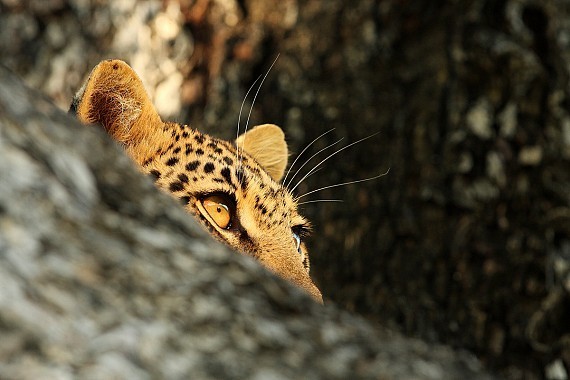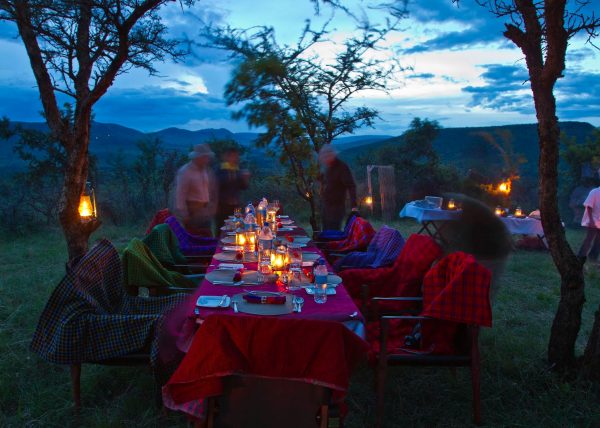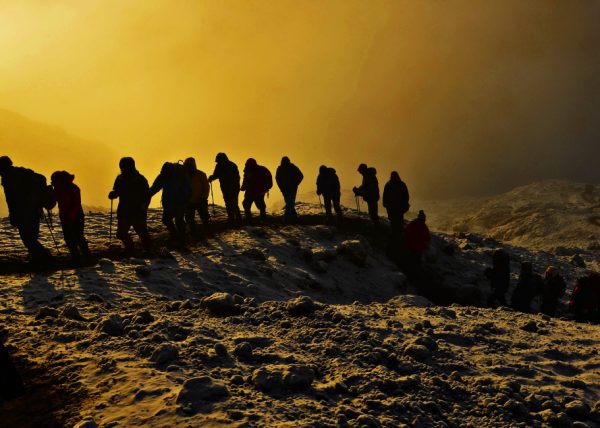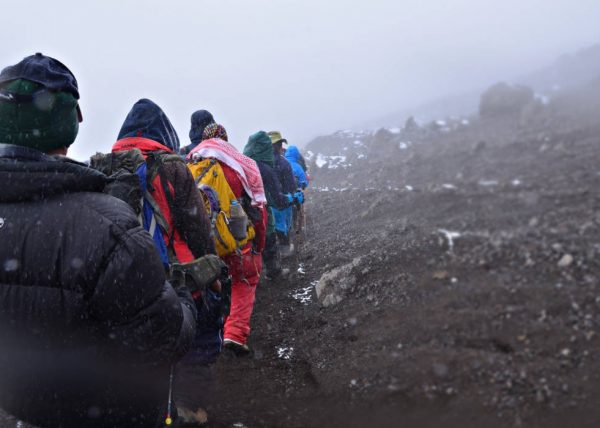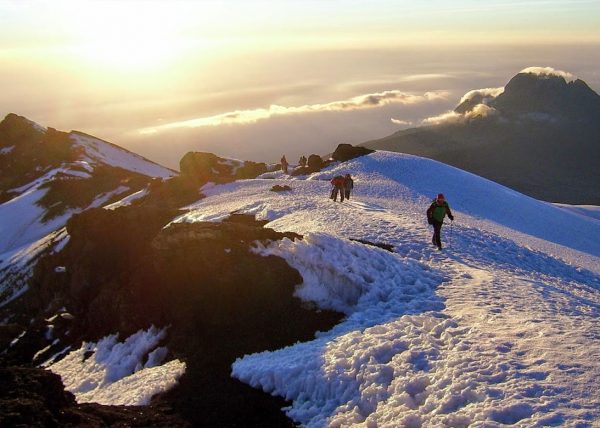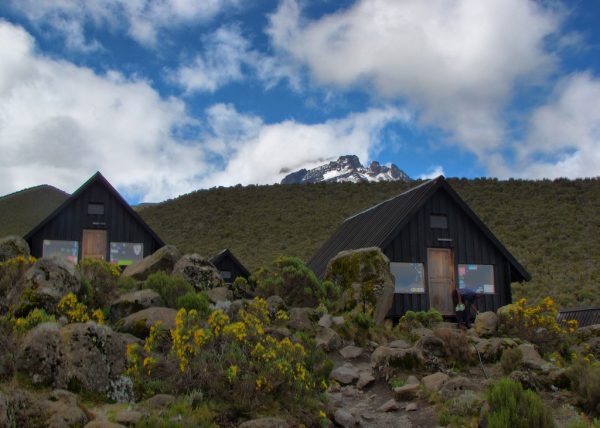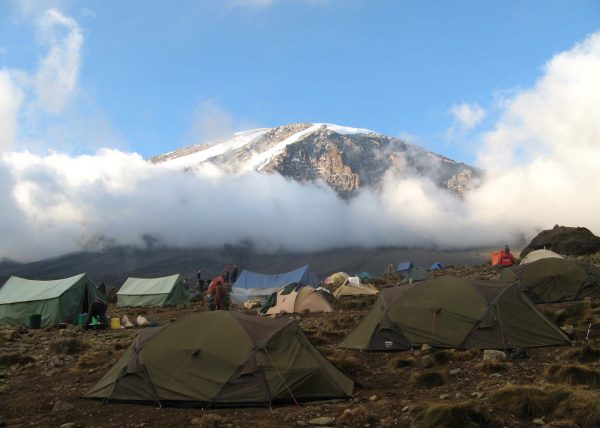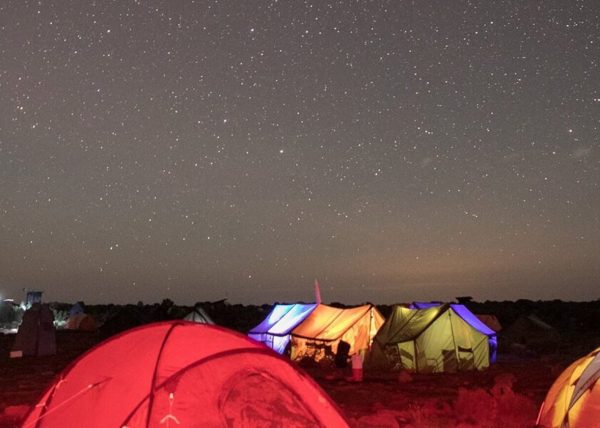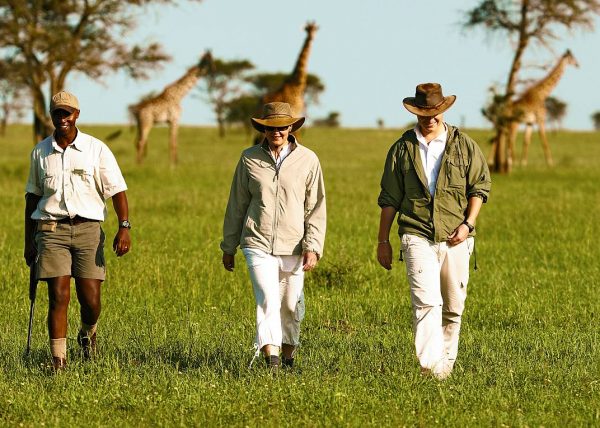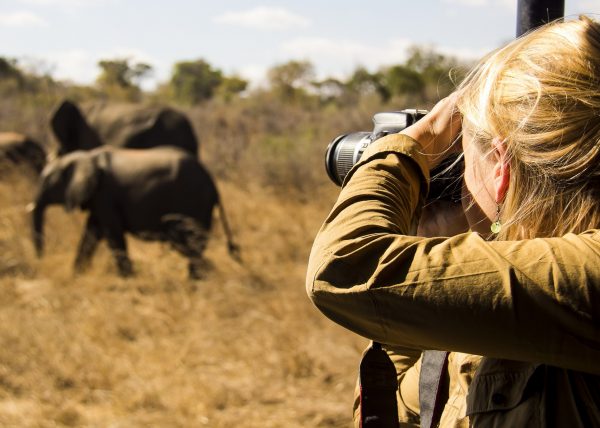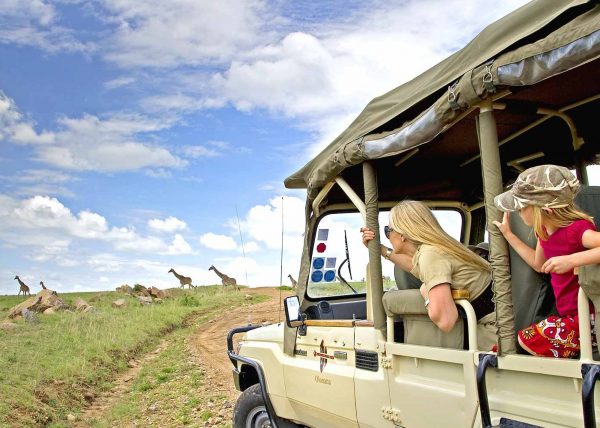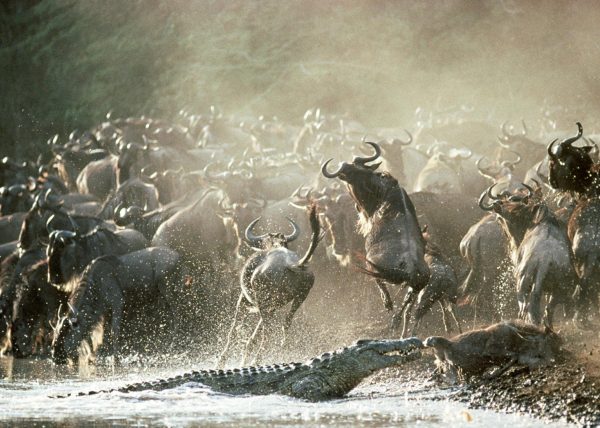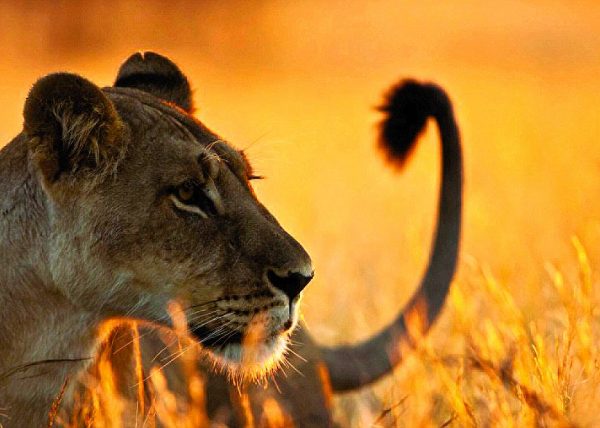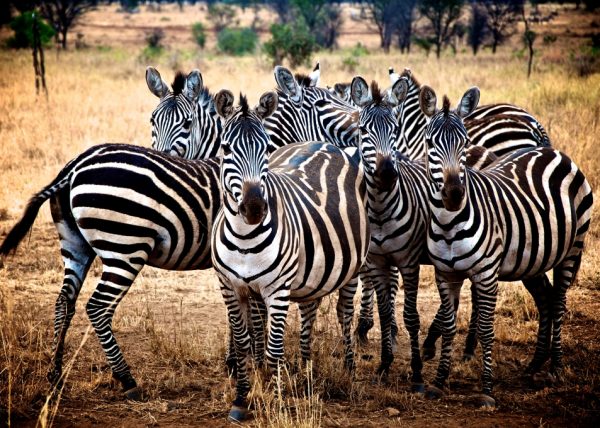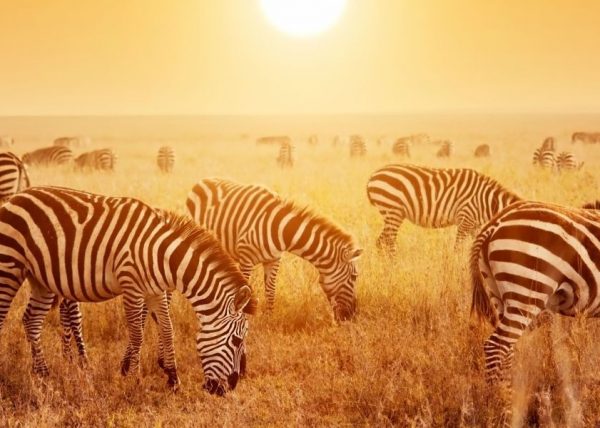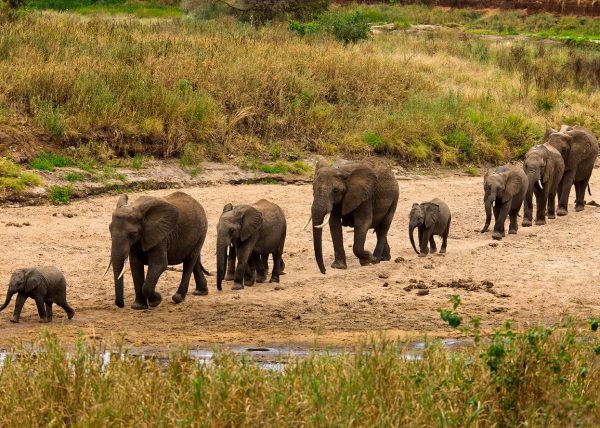Useful information on what lodges and camps to use and where to see the wildebeest migration in Tanzania
Planning a migration safari can be tricky; the wildlife is on the move after all! However, with a little help from us, you will hopefully be able figure out where you should be at what time and where it’s best to stay.
Mobile tented safaris are a great way to follow the migration in Tanzania. The tented safaris follow the migration as it moves, and stop at private campsites whilst the migrating herds are still. There are also some fantastic permanent lodges where you can base yourself whilst you head out to explore the Serengeti.
The Great Migration Map - January/February
Throughout January and February, following the rains, the migration moves onto the Serengeti plains in the south, where the newborns graze along with the herds. This is also the time for the predators to fatten up. With thousands of young, it’s easy pickings for cheetahs and lions, and the hyenas make the most of this abundance of food by picking up what remains of the cats’ kills, as well as picking off their own fresh meals. At this time of year, being located in the Ndutu area will give you the best access to the migration. Our favourites would be Olakira, Lake Masek and the Ndutu Safari Lodge.
Olakira is a mobile tented camp which moves through the Serengeti, staying close to the Great Migration. Wildlife viewing from the camp itself can be spectacular, and game drives offer one of the best opportunities to see the migrating herds as well as the ‘Big Five’.
Lake Masek is a relatively well-priced tented camp with a good balance of design and rustic safari ambience. Although often utilised by safari groups, it is run by a team that is adept at looking after individuals, and is spacious enough that there’s no feeling of being side-lined or tucked away in a corner. Named for the lake it overlooks,Lake Masek Tented Camp is located just south of the border of southern Serengeti National Park and northwest Ngorongoro Conservation area.
Ndutu Lodge has to be one of the best bases from which to observe the wildlife in the area. Situated among giant acacia trees next to Lake Ndutu, this simple and comfortable lodge is a great migration safari location, although it can be quite noisy, with herds literally passing through the lodge!
Map of the Great Migration - March/April
March through to April is when the heavy rains set in and the migration begins moving through the Central Serengeti and towards the Western Serengeti, where the long grasses are new and the food is good. This is a beautiful time to travel: flowers cover the Central Serengeti and there are very few people around. However, it being the rainy season, you need to be prepared. Also, the roads get muddy, and therefore access to some of them may be limited. During this time, staying in the Ndutu or Seronera areas will put you in the right place for the migration. Again, Asilia is a great base from which to explore the Central Serengeti, as is Dunia Camp.
Dunia Camp has access to the best that the Southern and Central Serengeti has to offer – the Ndutu area, Southern Plains, Moru Kopjes, and Central Serengeti Valley. The migratory wildebeest and zebra share the land with elephant, giraffe, Thomson gazelle, and a host of other wildlife, including the big cats, with lion prides and cheetah frequently sighted. Staying here during this time will not only give you prime access to the migration, but as this is shoulder season, it will also be quieter in the Serengeti, meaning that there will be relatively few other safari vehicles around.
As the dry season approaches during May and June, the migrating herds begin moving once again, this time towards the Grumeti River, where the crocodiles wait for an easy meal. Seeing the thousands of wildebeest crossing the river is a sight not to be missed, and has to be one of the highlights of a Tanzania Migration Safari. Being located near the Grumeti River is ideal at this time. However, being in the Seronera and Western Serengeti area will also give you fantastic access. Mbalageti Lodge and the Grumeti River Camp are ideal bases for access to the migration at this time.
Mbalageti Tented Lodge, also referred to as Mbalageti Serengeti, is perched on the crest of Mwamnevi Hill and offers panoramic views of the Mbalageti River Valley and Dutwa Plains below. This remote slice of the Serengeti is incredibly isolated, stunningly beautiful, and allows for a unique ‘off the beaten path’ safari experience. The Lodge is named for the seasonal Mbalageti River that winds through a fold of plains and hills that stretches from the Southern Serengeti plains, past the Lodge, and eventually into Lake Victoria. This river forms a natural corridor that the wildebeest and zebra migration follow each year, putting Mbalageti Tented Lodge right in the middle of their thundering path!
The Grumeti Serengeti Tented Camp sits in an area of the Serengeti rich in wildlife, and during these months, the great migration passes through the area, meaning you may witness the river crossings.
Map of the Great Migration - July
July is one of the most exciting months of the great migration as the herds move further into the Northern Serengeti and toward the Mara River. At this time of year, you can witness thousands of wildebeest battling their way through the waters and trying to avoid the crocodiles. The best place to be is in the Northern Serengeti or across the river in the western part of the Maasai Mara. Asilia once again is a good option (having moved from the Southern Serengeti), as is Sayari Camp.
Sayari Camp offers undisturbed views towards the Mara River as well as the famed Lamai Wedge where the herds gather at the start of the migration. As the migration begins, hundreds of thousands of wildebeest brave the crocodile-infested waters of the Mara River to reach safety; a dramatic game-viewing experience that is all but on the doorstep of Sayari Camp.
Map of the Great Migration - August/September
After the excitement of the river crossings, the migrating herds settle, for a while, in the Maasai Mara in Kenya. The Mara is an amazing area of rolling savannah hills cut through with dark green riverine forest areas, making this the perfect habitat for a whole host of wildlife. The rich grasslands support the herds throughout August and September.
Map of the Great Migration - October
As the rain clouds start to build, the wildebeest begin their journey south anticipating the rains. They slowly make their way east through the Masai Mara and back down into the Serengeti National Park. The ideal base during October would be in the north-eastern Serengeti and Sayari once again is a great camp at this time.
This area comes into its own during the months of September and October, and is the best place for a safari in Tanzania when the wildebeest migration moves southwards through Lobo and down to the Serengeti plains.
Map of the Great Migration - November
Lobo encompasses the Mara and Grumeti Rivers, which are bordered by acacia woodlands. It is less visited, and therefore less crowded, than other areas of the Serengeti, which means that one can potentially spend a full day in the middle of the migration without seeing another vehicle.
As the short rains begin in November, the migration moves quickly south towards the Loliondo area of the Serengeti. The Loliondo area is part of the much larger Serengeti ecosystem, and is on land owned by the Maasai. The area offers a great mix of resident game, and is excellent walking country, with dramatic scenery of open plains, rock kopjes, and woodlands. Whilst the migration is here, staying at Serengeti Migration Camp will put you in the right place for the huge herds.
Located next to the famous Grumeti River which is home to resident hippos that bark and wallow their days away, Serengeti Migration Camp has become synonymous with low-impact high-action game viewing in a landscape that is untouched since the dawn of time.
Hidden among the rocky outcrops Serengeti Migration Camp is located at the starting point of the Migration. Comprising of 20 luxurious elevated tents, each with spacious and richly furnished bedrooms, Serengeti Migration Camp blends seamlessly into the environment.
Map of the Great Migration - December
As December nears, the migration settles on the short grass plains in the Southern Serengeti. At this time of year, the migration tends to stay around the Seronera and Ndutu area as Seronera provides a constant source of water for the herds. During December you have the privilege of seeing thousands of wildebeest and zebra gathering on the southern plains as the migration gets underway. This is great time to see a huge variety of game as the big cats follow the feast. As with the months or January and February, being based at Dunia, Olakira, Lake Masek and Ndutu Lodge will put you in the right place to see the vast herds. The Ndutu area consists of endless grass plains, which keep going for as far as the eye can see, and the plains are at their best during December as the grass is green and the wildlife is plenty.
Now whilst you may have a better idea of the migration movements, the concentration of game is not always as one may expect. You must bear in mind that the huge herds are spread out over the Serengeti-Masai Mara ecosystem, and they may not always be in close proximity to one another. That said, even if the herds are slightly spread out, to be amongst them is still an incredible experience.
If you are interested in travelling to the Serengeti to witness the great migration, or if you would like some more information on where to stay and what we can offer, do feel free to get in touch, and I would be happy to help.
Asante (thank you)
Nelson.
Tanzania Migration Safari Itinerary
Day 1: Arusha, Tanzania
On arrival in Tanzania, you will be met by your Wild Exploration guide and transferred to your Hotel. The drive from the airport to the lodge is about 50 minutes. The Dik Dik Lodge, set among tropical gardens on a former coffee plantation with Mount Kilimanjaro and Mount Meru as a backdrop. This will be your home for one night.
Dik Dik Lodge
Day 2 & 3: Arusha – Tarangire National Park
After breakfast in Arusha, you will be driven to Tarangire National Park, the third largest national park in Tanzania. There will be many opportunities for game viewing as we drive through the park. Tarangire contains a range of ecosystems from grassland and woodlands in the north, to scrub and wetlands further south. The Tarangire river cuts through the park and empties into Lake Burunge in the west. Tarangire boasts one of the largest and most conspicuous elephant populations in East Africa. There are large family groups with many calves being born each year as the population continues to recover from the devastating effects of poaching in the eighties. You will see herds of elephants and experience close contact with the matriarchs, the babies, teenagers, and bulls. Your close contact will help you in understanding these incredible animals. Spend several hours surrounded by the herds and you cannot help but feel their wisdom. Tarangire is also known for its abundant baobab trees, most of which are over 400 years old, and its beautiful landscape.
Your second day in the park (Day 3) will be for more explorations of Tarangire.
Dinner and overnight at Tarangire River Lodge.
Day 4: Tarangire – Manyara – Ngorongoro
After breakfast, we will drive to Lake Manyara National Park for a game drive and have a picnic lunch. While Manyara is one of the smallest parks, it is one of the most interesting. Much of the northern part of the park is fed by underground water from the Ngorongoro Highlands and as a result is covered in dense forest vegetation, giving the appearance of a tropical jungle. This forest is ideal habitat for elephant, bushbuck, blue monkey, and huge troops of olive baboons. Some parts are dry bush land attracting zebra, impala and giraffe, while the lakeshore provides another habitat, perfect for flamingos and other shore birds. Our game drive will take us slowly south through the park and later in the afternoon proceed to Ngorongoro Crater Lodge. From a fantastic viewpoint on the crater rim, the whole caldera 2000 feet below will impress you. We will have dinner and stay the night at the lodge.
Dinner and overnight at Ngorongoro Crater Lodge
Day 5 – Ngorongoro Crater
Today we will leave very early in the morning (after a very early breakfast) and drive to the floor of the Ngorongoro Crater. There we will have a full day game drive, as we will be carrying our picnic lunch with us prepared from the lodge. The Crater is a wonderful place – you descend more than 2,000 feet on steep tracks cut into the crater wall to reach the open plains of the Crater floor. The Ngorongoro Crater is undoubtedly the best place in Tanzania to view black rhino as well as large prides of lion that include magnificent black-manned males. It is also home to huge herds of wildebeest and zebra and many other plains game. An alkaline lake in the floor of the Crater provides a habitat for colorful flamingo and a variety of other water birds. Massive bull elephants feed in the swamps, some adorned with enormous tusks. We will have our picnic lunch at the hippo pool area and later in the afternoon drive back to the Lodge for dinner and overnight.
Day 6 – Ngorongoro Crater
Today we will leave with a picnic breakfast basket for another tour in the Crater. This is a day of quality pictures and exploration of the magnificent multiple land use ecosystem. We will then come out for a late lunch and a rest at the lodge and get ourselves ready for the Serengeti the next day.
Dinner and overnight at the lodge.
Day 7 -- Ngorongoro – Oldupai Gorge – Serengeti
Today we head for the Serengeti, en-route visiting Oldupai Gorge, a river canyon cutting 300 ft. into the volcanic Serengeti plains, once home to our earliest ancestors. Their remains can still be found nestling in the exposed soils. The Oldupai Gorge aka “THE CRADLE OF MAN KIND” was made famous by Louis and Mary Leakey.
We descend through the Gorge to the Serengeti Plains. Part of the Mara-Serengeti ecosystem, Serengeti National Park is home to the most famous wildlife spectacle on earth, the annual migration of a million wildebeest.
We will stop for our picnic lunch at Naabi Gate Hill. When done with lunch and formalities at the gate, the expedition continues towards Central Serengeti, known for its leopards, lions. At the end of the journey across the plains, we arrive at the Mbuzi Mawe Tented Camp – your home for the next 2 days. The camp is located in an area of the bush where you can experience living in the wild of Africa. This is not camping in tents and sleeping bags and eating canned food. This is a luxurious tented camp. The spacious verandah in front of your tent is furnished with comfortable safari chairs and tables – the perfect retreat for a relaxing moment watching a weaver bird building its nest in a nearby Acacia tree, a herd of impala grazing quietly only meters away from you, or simply relaxing and listening to the sounds of the African bush. Your bathroom is complete with a dressing table and is fully plumbed with washbasin, lavatory and showers – a new and often surprising interpretation of ‘camping’. Hot water is available throughout the day and evening. We will arrive at our camp in time for a sundown cocktail and rest.
Dinner and overnight at Mbuzi Mawe Tented Camp
Day 8 -- Central Serengeti
Today we will leave after breakfast for another search of the big cats and the many animals’ species of the Serengeti.
After topping for a picnic basket lunch we resume for more game viewing before we return to the camp for a sundown drink, followed by a delicious dinner.
Days 9-- 12 Central Serengeti –Northern Serengeti
After breakfast we will venture 2 hours north for a search of the running herds of the Wildebeests around the Mara River area. We will arrive at our camp for a hot lunch and a small siesta before we go down to the river to witness the wild life around 4pm. The next four days will be spent exploring the Northern Serengeti and its many animals and beautiful scenery.
Serengeti Mara Camp is located in the northern part of the Serengeti on the Mara River. It is a traditional 12 bed mobile-tented safari camp. You can be assured the location will be as close to the migration as possible. This particular tented camp has comfortable beds, private veranda, overlooking the Serengeti. After game drives, guests can choose the privacy of their veranda or the comfortable atmosphere of a common area or the views of the sundowner spots. The fantastic game, exclusive camp location, fabulous food and the very friendly personal service make this camp an unforgettable safari experience.
Dinner and Overnight Serengeti Mara Camp
Day 13 – Kogatende --- Arusha
After breakfast we will drive to the nearby Kogatende Airstrip for a short charter flight back to Arusha.
Arrive at the Arusha Airport and transfer to Arusha Coffee Lodge for lunch and a day room. You may choose to do some shopping at the Cultural Heritage or visit the Central Food Market in Arusha. Early dinner is provided at the lodge, after which you will be transferred to Kilimanjaro International Airport for a flight back home.
Your African Adventure Safari is complete.


